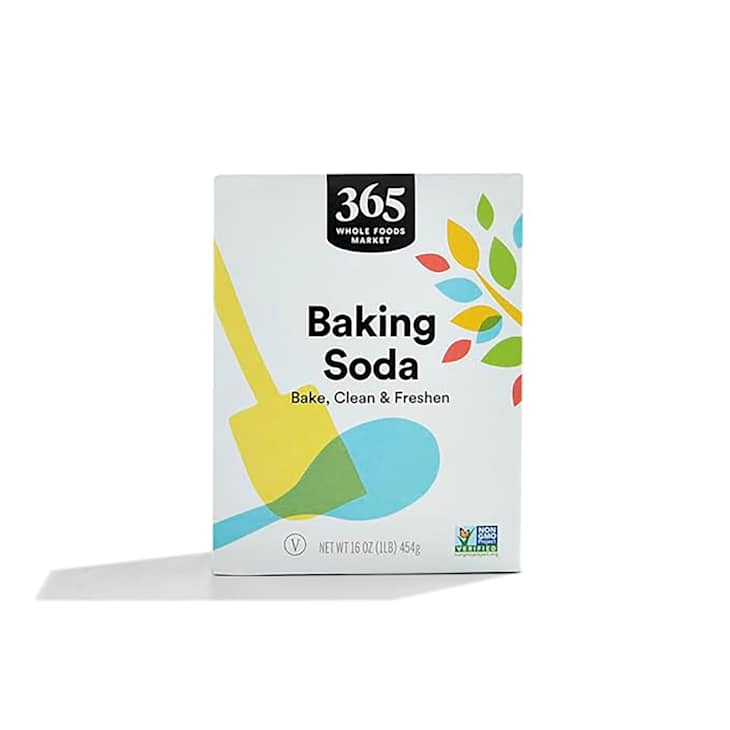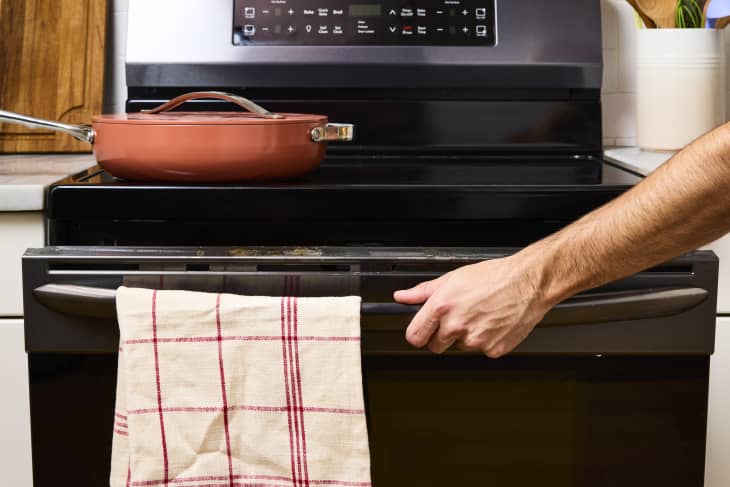

If you’ve ever looked for a DIY cleaning solution, you know people claim baking soda can spruce up just about anything. After enough trials of my own, I’ve finally learned to stop underestimating the cleaning power of baking soda — but I still don’t give it enough credit. The latest spot I put baking soda to the test was in my oven. I was looking for an easy, all-natural way to clean my oven and, of course, a baking soda paste floated to the top of my search.
I followed The Kitchn editors’ advice for the best natural oven-cleaning method, making a paste of baking soda and water to get all the grease, gunk, and grime off before holiday cooking commences. Here’s how it went.

How to Make a Baking Soda Paste to Clean an Oven
Sometimes you can just sprinkle baking soda on a surface to clean it. Other times, it’s better to make a paste — and that’s the case for cleaning an oven. Here’s how to do it:
- Pour some baking soda into a bowl, starting with 1/2 to 3/4 of a cup.
- Add water, a little at a time, to the powder, and stir until you’ve got a spreadable paste. It should be about 3-to-1 baking soda to water.
It might take a little practice to get the ratio right. For me, the powder will typically look like a pile of snow, which means I haven’t added enough water. Other times, it looks like it’s about to dissolve completely, like sugar, which means I’ve added too much water. The key is to add and stir, add and stir, until you’ve got something that resembles a thin toothpaste.

How to Clean an Oven with a Baking Soda Paste
- Empty the oven.
- Spread the paste all over the oven (or just on the grimiest parts).
- Let it sit overnight, or at least 12 hours.
- Remove and clean the oven racks.
- Wipe away the paste with a wet cloth. (Optional, but very helpful: Spray some vinegar for extra cleaning power.)
- Wipe the oven with a dry cloth.
- Replace the racks.
What Happened When I Tried This Natural Oven-Cleaning Trick
When I tried this trick, I spread the paste over the bottom of my oven, where I noticed some baked-on stains. I also spread some of the thicker, snow-like paste I had made on the inside of the glass door. I was a little worried that when I closed the door, the paste might fall off, but it was thick enough to stay put once it dried.
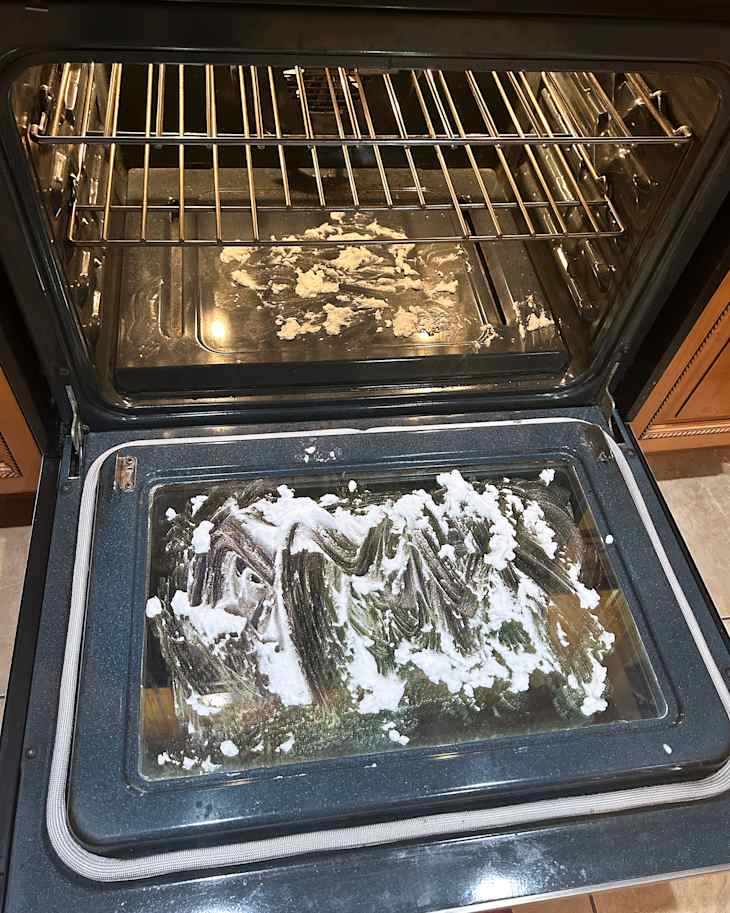
Then, I let the paste do its thing overnight. The next morning, I wiped away the paste with a damp cloth (I used a Swedish dishcloth from Recyco). Admittedly, it was a bit gunky to remove the paste. I tossed more than a few chunks of powder right into my stainless steel sink, which I used to give it a nice scrub once I was done with the oven.

Here’s where the optional vinegar spray became mandatory for me: When you spray baking soda with vinegar, it fizzes and gets thinner (sometimes it even dissolves). I used that to my advantage to clean up the rest of the baking powder. I was able to wipe the oven down much more easily.
And just like that, everything was so clean. Even the oven glass was much clearer; I can actually see into the oven without having to open the door! There was just a hint of vinegar in the air when I was finished cleaning my oven. It was a bit of a chore to get all the baking soda paste out, but I did it. The best part? If I did miss any baking soda residue, I’m not worried about it because it’s natural, whereas if I had used a chemical cleaner, I would have been stressing out that I had missed a spot and would risk feeding my family poison or filling my kitchen with fumes.
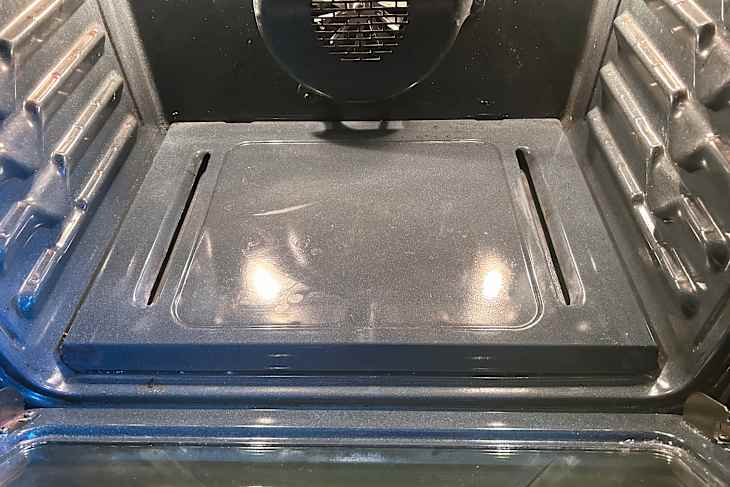
Although experts say the longer it sits, the better the baking soda works, I think I would have gotten the same results had I left the paste in my oven for, say, an hour. I’ll probably do just that next time to speed things along, unless it was really a mess and needed more contact time with the paste.
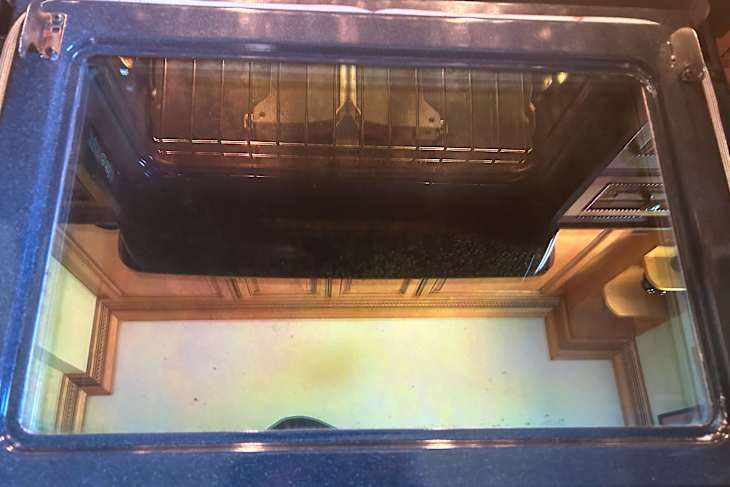
The vinegar spray is everything, though. Not only does it help remove the baking soda paste quickly, but there’s a lot of power in that fizz. I sprayed some vinegar while cleaning my sink with the baking soda paste, and it got rid of some stains around the drain, which was impressive.
I do need to perfect my baking soda paste-making game, though. After I saw what it did to my oven and now-shining sink, I want to move on to cleaning the grout in my shower. I’m all for a natural cleaning hack, but I never thought I would find one effective enough for my oven — that’s hiding in my pantry. I’ll be stocking up on boxes of baking soda this holiday season to clean up after all of our holiday cooking and baking.
